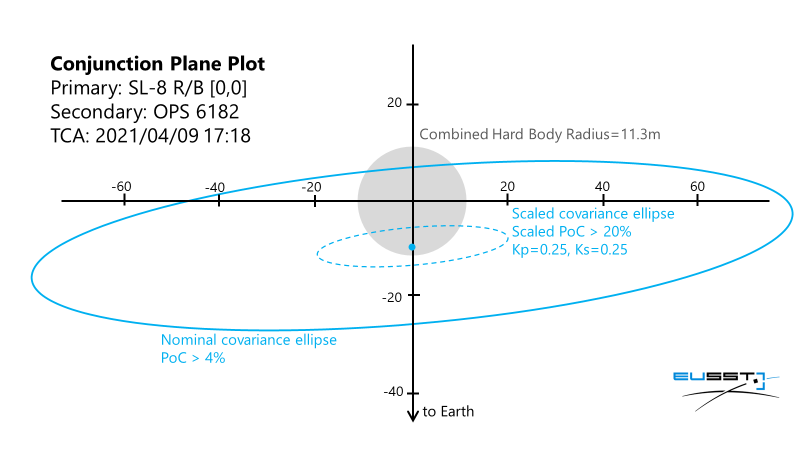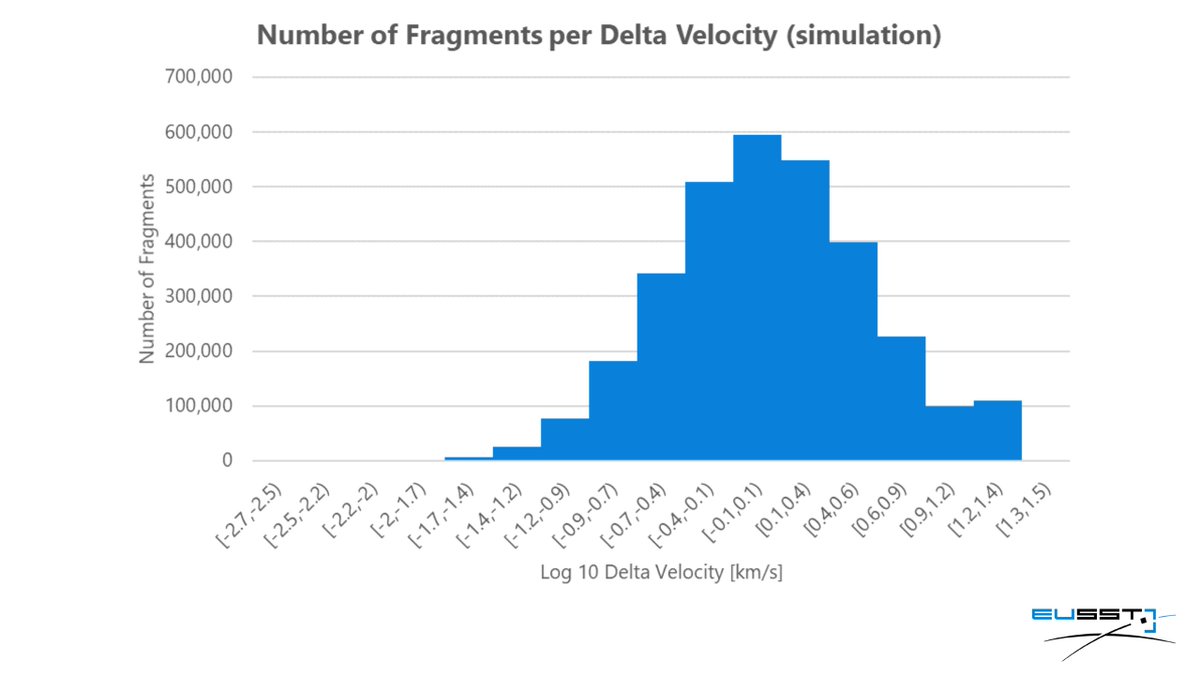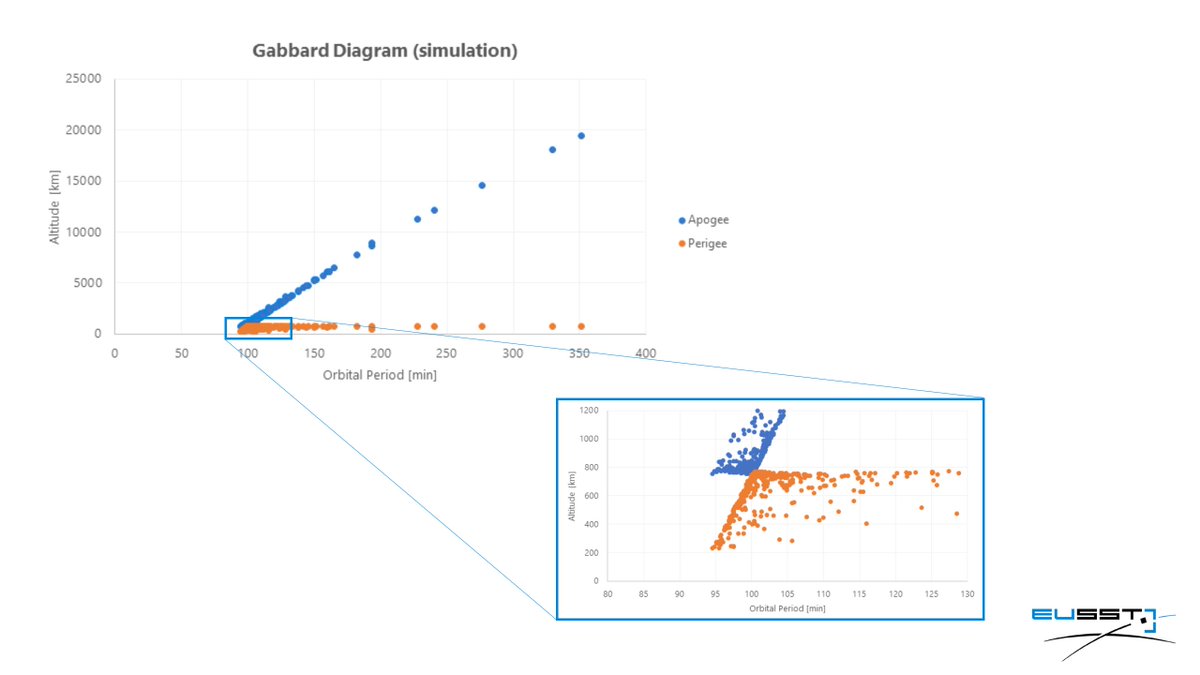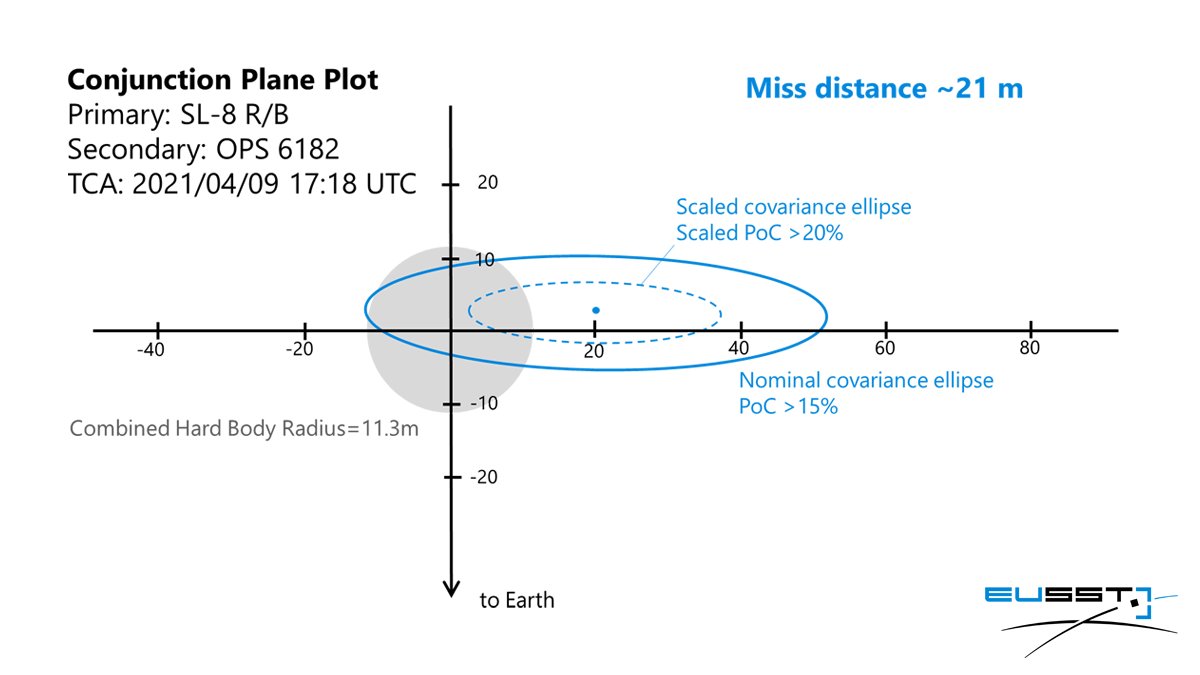Our Operations Centres are monitoring a potential collision of two large, inactive #space objects. EU #SST estimates a probability above 1% that they may collide in two days
The two defunct objects are OPS 6182 (1978-042A), a meteorological #satellite https://abs.twimg.com/emoji/v2/... draggable="false" alt="🌧️" title="Wolke mit Regen" aria-label="Emoji: Wolke mit Regen">
https://abs.twimg.com/emoji/v2/... draggable="false" alt="🌧️" title="Wolke mit Regen" aria-label="Emoji: Wolke mit Regen"> https://abs.twimg.com/emoji/v2/... draggable="false" alt="🛰️" title="Satellit" aria-label="Emoji: Satellit"> and rocket body
https://abs.twimg.com/emoji/v2/... draggable="false" alt="🛰️" title="Satellit" aria-label="Emoji: Satellit"> and rocket body https://abs.twimg.com/emoji/v2/... draggable="false" alt="🚀" title="Rakete" aria-label="Emoji: Rakete"> SL-8 R/B (1981-041B). The network of EU #SST sensors
https://abs.twimg.com/emoji/v2/... draggable="false" alt="🚀" title="Rakete" aria-label="Emoji: Rakete"> SL-8 R/B (1981-041B). The network of EU #SST sensors https://abs.twimg.com/emoji/v2/... draggable="false" alt="📡" title="Satellitenantenne" aria-label="Emoji: Satellitenantenne"> has been requested to observe the objects and provide additional measurements.
https://abs.twimg.com/emoji/v2/... draggable="false" alt="📡" title="Satellitenantenne" aria-label="Emoji: Satellitenantenne"> has been requested to observe the objects and provide additional measurements.
Stay tuned here for more updates.
#spacedebris
Stay tuned here for more updates.
#spacedebris
See the below plot for the conjunction plane at Time of Close Approach (TCA) #EUSST #spacedebris #space
More than 400 of the fragments generated by the potential collision would be larger than 20cm. Gabbard diagram shows the extent of orbital regimes that these simulated fragments would reach.
#EUSST continues monitoring the probability of collision. Stay tuned for more updates.
#EUSST continues monitoring the probability of collision. Stay tuned for more updates.

 Read on Twitter
Read on Twitter
 Update: #EUSST simulations indicate that the potential collision between the two #space objects would generate more than 4 million fragments. This plot shows the Delta-V distribution of the whole cloud of fragments #spacedebris" title="https://abs.twimg.com/emoji/v2/... draggable="false" alt="⚠️" title="Warnsignal" aria-label="Emoji: Warnsignal">Update: #EUSST simulations indicate that the potential collision between the two #space objects would generate more than 4 million fragments. This plot shows the Delta-V distribution of the whole cloud of fragments #spacedebris" class="img-responsive" style="max-width:100%;"/>
Update: #EUSST simulations indicate that the potential collision between the two #space objects would generate more than 4 million fragments. This plot shows the Delta-V distribution of the whole cloud of fragments #spacedebris" title="https://abs.twimg.com/emoji/v2/... draggable="false" alt="⚠️" title="Warnsignal" aria-label="Emoji: Warnsignal">Update: #EUSST simulations indicate that the potential collision between the two #space objects would generate more than 4 million fragments. This plot shows the Delta-V distribution of the whole cloud of fragments #spacedebris" class="img-responsive" style="max-width:100%;"/>

 Latest update: according to #EUSST the close approach between #space objects SL-8 R/B and OPS 6182 remains stable in geometry and in Scaled Probability of Collision. Miss distance would be ~21m and Scaled PoC over 20%. This should be the last estimate until TCA." title="https://abs.twimg.com/emoji/v2/... draggable="false" alt="⚠️" title="Warnsignal" aria-label="Emoji: Warnsignal">Latest update: according to #EUSST the close approach between #space objects SL-8 R/B and OPS 6182 remains stable in geometry and in Scaled Probability of Collision. Miss distance would be ~21m and Scaled PoC over 20%. This should be the last estimate until TCA." class="img-responsive" style="max-width:100%;"/>
Latest update: according to #EUSST the close approach between #space objects SL-8 R/B and OPS 6182 remains stable in geometry and in Scaled Probability of Collision. Miss distance would be ~21m and Scaled PoC over 20%. This should be the last estimate until TCA." title="https://abs.twimg.com/emoji/v2/... draggable="false" alt="⚠️" title="Warnsignal" aria-label="Emoji: Warnsignal">Latest update: according to #EUSST the close approach between #space objects SL-8 R/B and OPS 6182 remains stable in geometry and in Scaled Probability of Collision. Miss distance would be ~21m and Scaled PoC over 20%. This should be the last estimate until TCA." class="img-responsive" style="max-width:100%;"/>


